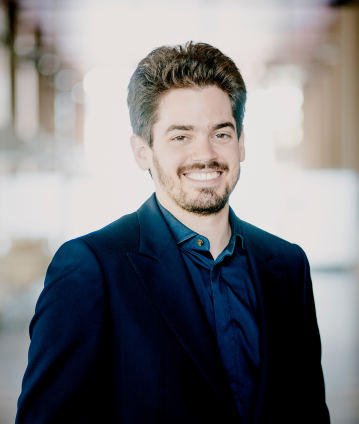Lahav Shani conducts Dvořák’s Symphony “From the New World”

In 1892, Antonín Dvořák was appointed director of the National Conservatory of Music of America in New York – with the mission to develop an American national style. His symphony From the New World captures the vastness of the landscape and draws on the music of the indigenous population. However, Charles Ives, whose enigmatic Unanswered Question became a milestone, is regarded as the real father of an American idiom. Lahav Shani and concertmaster Daishin Kashimoto also present Dmitri Shostakovich’s First Violin Concerto.
What is modern music? The programme that Lahav Shani presented for his guest conducting appearance with the Berliner Philharmoniker provides not one, but three individual answers to this question. It is remarkable that less than 15 years lie between the composition of Dvořák’s Ninth Symphony and the first draft of Ives’s The Unanswered Question.
Charles Ives gave up his career as an organist in 1902 and turned to work as an insurance salesman. Without any particular need to do so, he was inspired to compose The Unanswered Question in 1906 – by Ralph Waldo Emerson’s poem The Sphinx. In Ives’s work, the increasingly urgent questions “about being” are entrusted to the solo trumpet. While a carpet of muted strings represents “the silence of the Druids, who know nothing, see nothing and hear nothing”, the woodwinds rage in the “pursuit of the unknown answer”, according to Ives. It was not until 1946 that a frequently revised version was premiered.
About a year later in the USSR, Dmitri Shostakovich began writing his First Violin Concerto – with no prospect of a performance in sight. The threat posed by cultural policy was too great, and shortly afterwards he was once again accused of “formalism and alienation from the people”. He lost his teaching positions at the conservatories in Leningrad and Moscow. Shostakovich found an outlet in the violin concerto: the first movement (nocturne) is a depressing lament, the scherzo mocking – it is believed to caricature the stuttering cultural official Andrei Zhdanov, who harassed the composer. The passacaglia symbolises the inexorable grinding of fate, and the subsequent cadenza seems lost in empty space. It is swept away by a violent and inescapable burlesque. First performed publicly in 1955, after Stalin’s death, the soloist here is 1st concertmaster Daishin Kashimoto. The premiere was thanks to soloist David Oistrakh, who convinced an American impresario to stage a performance of the work. This in turn prompted the Soviet Union to quickly arrange the premiere in its own country – albeit under a new opus number (op. 99) to suggest that Shostakovich had revised the violin concerto in accordance with socialist guidelines. He hadn’t changed a note.
It seems curious that in 1893 the National Conservatory in New York chose the Czech Antonín Dvořák to found American music. Although influenced by indigenous folklore, the result is much more Dvořák than anything else: “I simply invented my own melodies, into which I incorporated the characteristics of Native American music.” With its enormous wealth of motivic ideas of timeless beauty, the Symphony From the New World continues to enjoy enduring popularity to this day.
© 2026 Berlin Phil Media GmbH
Artists
Our recommendations
- Family concert: Vivaldi’s “The Four Seasons”
- Vivaldi’s “Four Seasons” with the Berliner Barock Solisten
- Chamber music: Philharmonic Octet Berlin
- Paavo Järvi conducts Beethoven and a world premiere
- A “Late Night” concert with French chamber music and Simon Rattle at the piano
- Andris Nelsons conducts Tchaikovsky at the Waldbühne